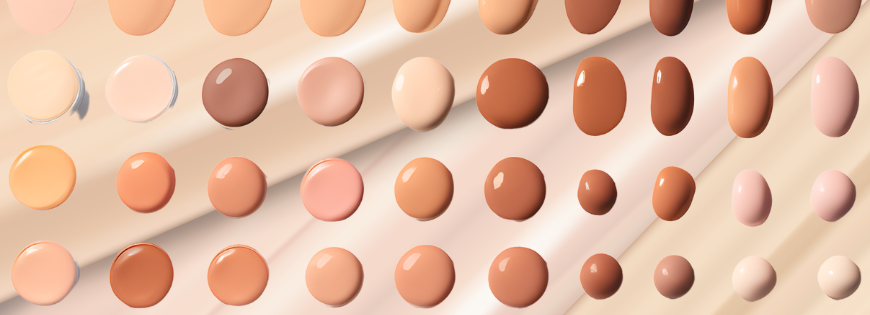Let’s be real: foundation is one step in makeup where you don’t want to look like you’re wearing any product. Unlike shimmery shadows or bright lipsticks, powder should look as natural as possible, like your skin. This means that finding the perfect shade of foundation is an absolute must. But finding the perfect shade isn’t always easy. There’s a huge variety of shades and formulas out there, so how do you know which one is right for you?
Luckily, we have a few tips to help you choose your foundation shade and ensure a natural look. It all starts with recognizing the undertones of your skin. Keep reading to learn more about how to determine your skin tone for foundation shopping.
How to determine undertones
Skin tone refers to the color of your complexion and is usually easy to identify. There are four main categories that your skin tone can fall into: fair, light, medium, and deep. It’s usually enough to look at your face without makeup to determine which category best describes your skin.
In addition, your skin has undertones — colors that penetrate the skin and affect its overall tone. People are often less familiar with their undertones than their skin tone, but knowing your undertones is key to choosing a complexion product that will blend beautifully with your skin.
Undertones can be cool, warm or neutral. Cool undertones appear as shades of blue or pink in your complexion, while warm undertones appear as yellow or gold If you have neutral undertones, you probably have a combination of both. For example, olive skin tones tend to have neutral undertones.
You may not be able to immediately recognize shades of pink or yellow on your skin, but there are some simple tricks that can help you identify undertones.
- Look at your veins
Look at the inside of the wrist. If your veins are blue or purple, you probably have cool undertones. A green tone indicates warm undertones, and if you’re not sure or see a combination of both, you probably have neutral undertones.
- Try the paper test
You can also hold white paper up to your face to determine undertones. The white paper should create a reflection of the color on your skin. If your face looks more pink or blue, you probably fall into the category of cool undertones, while a yellowish shade will indicate warm undertones. If your skin looks gray, it may indicate neutral undertones.
How to find the perfect shade of foundation
If you have the opportunity to test the powder shades live and see how they look on your skin, there are some important things to consider. Check out our tips for finding the perfect shade:
- Test on the right part of the body
One of the secrets to matching your foundation shade professionally is to test several different shades on your jawline. People often apply makeup on their hands, but that doesn’t give an accurate idea of how it will look on your face. Your jawline is the perfect place to ensure that the shade matches both your face and neck, so you can achieve a flawless fit when applying powder all over your face.
Editor’s Tips: If this method doesn’t work for you, try testing the powder on the center of your upper chest. This can be a good option if your face and body are different colors due to sun exposure or hyperpigmentation.
- Look at the powder under different lighting
Before you decide to apply the powder all over your face, apply it in a thin layer and see it under different types of lighting. Powder can look completely different depending on the light. If you’re in a store, see how the shade looks under bright lighting in the sales area, then go outside and evaluate it in natural light. So you’ll find a powder that will look good wherever you are.
- Consider the season
Keep in mind that your complexion can change depending on the season. In winter, your complexion may be lighter due to less exposure to the sun, while in summer, it may be darker due to tanning. Especially if you wear foundation every day, it might be wise to have a few different shades to accommodate changes throughout the year. For example, you can have a shade that matches your tone perfectly in the winter and another that is one to two shades darker for the summer. So you will easily transition from one season to another without having to constantly look for a new shade of foundation.


